How to Create Consistent Characters in Midjourney
AI art generators such as Midjourney, Adobe Firefly, DALL-E etc. have transformed the creative landscape by enabling artists and creators worldwide to generate stunning visuals with just a few prompts. But, one significant limitation of these tools has been the difficulty in generating consistent characters across multiple images.
When a creator wants to use the same character in different scenes or settings, achieving consistency in appearance has been a challenge. Workarounds have often produced unsatisfactory results.
Now, there’s exciting news for AI art enthusiasts. Midjourney has released a new algorithm that aims to solve this problem by enabling the creation of consistent characters. Currently in its test phase, this feature has the potential to change the game for creators who rely on AI-generated art.
We're testing a new algorithm today to help you have "consistent characters" across your images. Check out our announcement channel for more instructions. It works for both MJ6 and Niji6 models. We hope this helps you play with telling stories and building new worlds <3
— Midjourney (@midjourney) March 11, 2024
In this blog post, I’ll explain how Midjourney’s new algorithm works, discussing its capabilities and limitations. I’ll provide a step-by-step guide on how to use this feature effectively, both on Discord and the web alpha platform.
Through examples, I’ll demonstrate the incredible potential of this tool in creating consistent characters across various settings and styles, from charming women to professional men and even 3D characters.
The ability to maintain character consistency opens up a world of possibilities. Whether you’re a seasoned AI artist or just getting started with tools like Midjourney, join me as I reveal the secrets to creating consistent characters and elevating your creative projects.
How to Create Consistent Characters
Midjourney’s new consistent character feature is a powerful tool that allows creators to generate characters with a consistent appearance across multiple images. This feature is similar to the “Style Reference” feature, but instead of matching a reference style, it tries to make the character match a “Character Reference” image.
Using the Feature on Discord
To use the consistent character feature on Discord, you’ll need to follow a few simple steps:
- After creating your initial character image, copy the URL of the image you want to use as a reference.
- In your next prompt, type –cref followed by the URL of your reference image. For example: “Character doing [action]. –cref [image URL]”
- You can also adjust the strength of the reference using the –cw parameter. A strength of 100 (–cw 100) is the default and takes into account the face, hair, and clothes of the reference image. If you want to focus only on the face, which is useful for changing outfits or hairstyles, you can set the strength to 0 (–cw 0).
It’s important to note that the consistent character feature works best when using characters created with Midjourney. If you try to use real photos or images of people, the results may be distorted, similar to what happens with regular image prompts.
When using the Cref feature, keep in mind that it works similarly to regular image prompts, but with a focus on character traits. However, the precision of this technique is limited, so it won’t copy exact details like dimples, freckles, or t-shirt logos. Cref is compatible with both Niji and normal MJ models, giving you flexibility in your creations.
Advanced Features
One advanced feature of the consistent character tool is the ability to use multiple reference images. By including more than one URL after the –cref parameter, separated by spaces (–cref URL1 URL2), you can blend the information or characters from multiple images. This is similar to using multiple image or style prompts and allows for even more creative possibilities.
Using the Web Platform
If you prefer to use the Midjourney web alpha, the process for creating consistent characters is slightly different, but still straightforward.
First, drag or paste your reference image into the imagine bar. You’ll see three icons appear on the image thumbnail. Click on the character icon to set the image as a character reference. If you want to use the same image for multiple categories (e.g., style reference and character reference), you can Shift+click on the desired options.
Tips for Best Results
To get the best results when using the consistent character feature, consider the following tips:
- Use high-quality, clear reference images that showcase the character’s face, hair, and clothing.
- Experiment with different reference strengths to find the right balance between consistency and flexibility.
- When blending multiple reference images, choose images with similar lighting, angles, and styles for a more cohesive result.
- Don’t be afraid to iterate and refine your prompts to achieve the desired consistency and style.
By following these guidelines and experimenting with the various features and settings, you’ll be well on your way to crafting stunning, consistent characters that bring your ideas to life.
Examples
Now that we’ve covered the basics of how to use Midjourney’s consistent character feature, let’s look into some examples to see the tool in action. I’ll explore three different use cases: creating a charming woman, a professional man, and a 3D character.
These examples will demonstrate the versatility and effectiveness of the consistent character feature across various styles and settings.
Charming Woman
For our first example, I’ll use the Midjourney website to create a series of images featuring a charming woman. I begin by running the prompt, “Full body shot of a modern and charming young woman, realistic photo.”
This initial prompt generates several options, from which we select the most appealing image to serve as our character reference.

Next, I click on the character icon in the image thumbnail to set our selected image as the character reference. With this reference in place, I type a new prompt: “She is reading a book in a library.”
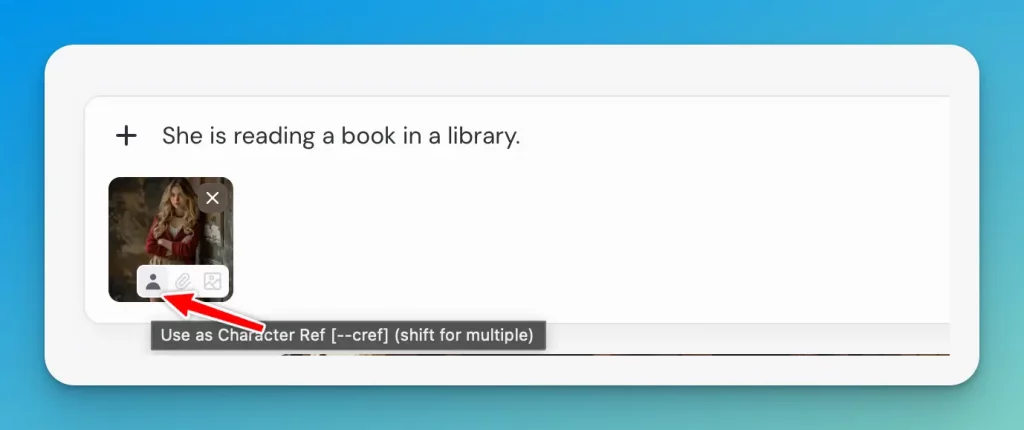
Midjourney generates a new image based on this prompt, and the output showcases the same charming woman, now standing in a library setting, engrossed in a book.
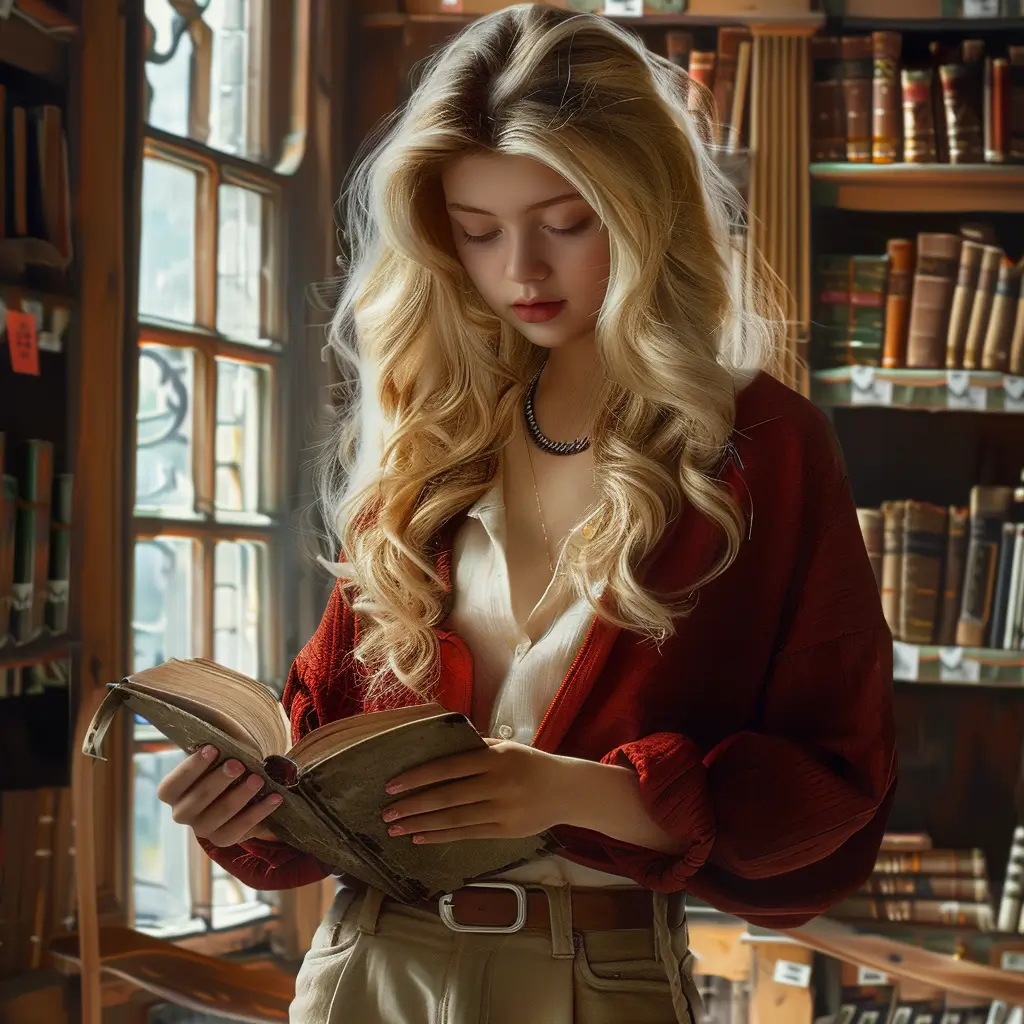
To further test the consistency of our character, we use the first image as a reference once again, this time with the prompt, “She is sleeping on a couch.” The resulting image depicts the woman sitting on a couch, eyes closed in a peaceful slumber.
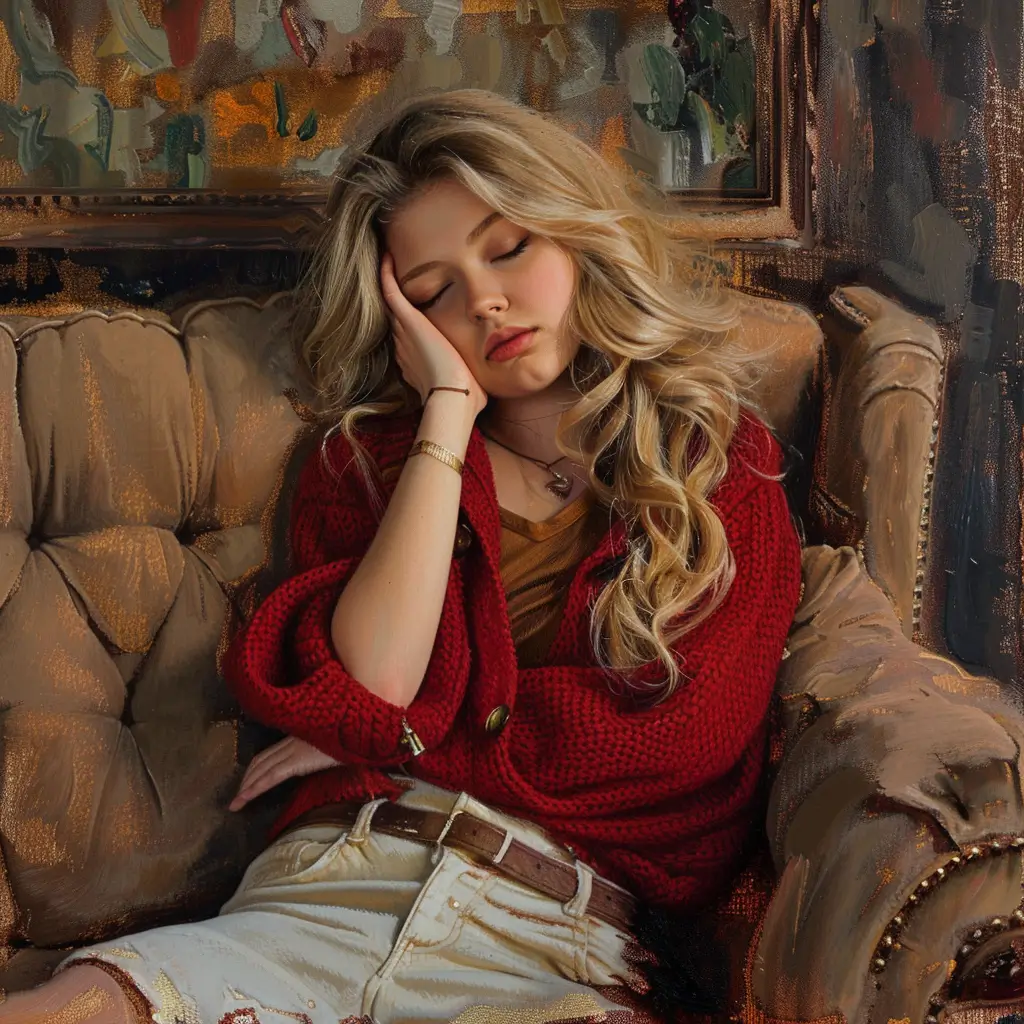
While not identical to the original reference, the character maintains a consistent appearance across all three images, with similar facial features, hair, and overall style.
Professional Man
In this example, I’ll switch to using Discord to create images of a professional man. I start by running the prompt, “A young professional man in suits. –v 6.0.” After generating several options, we choose the most suitable image and upscale it to get a higher-quality version. We then copy the URL of the upscaled image to use as our character reference.
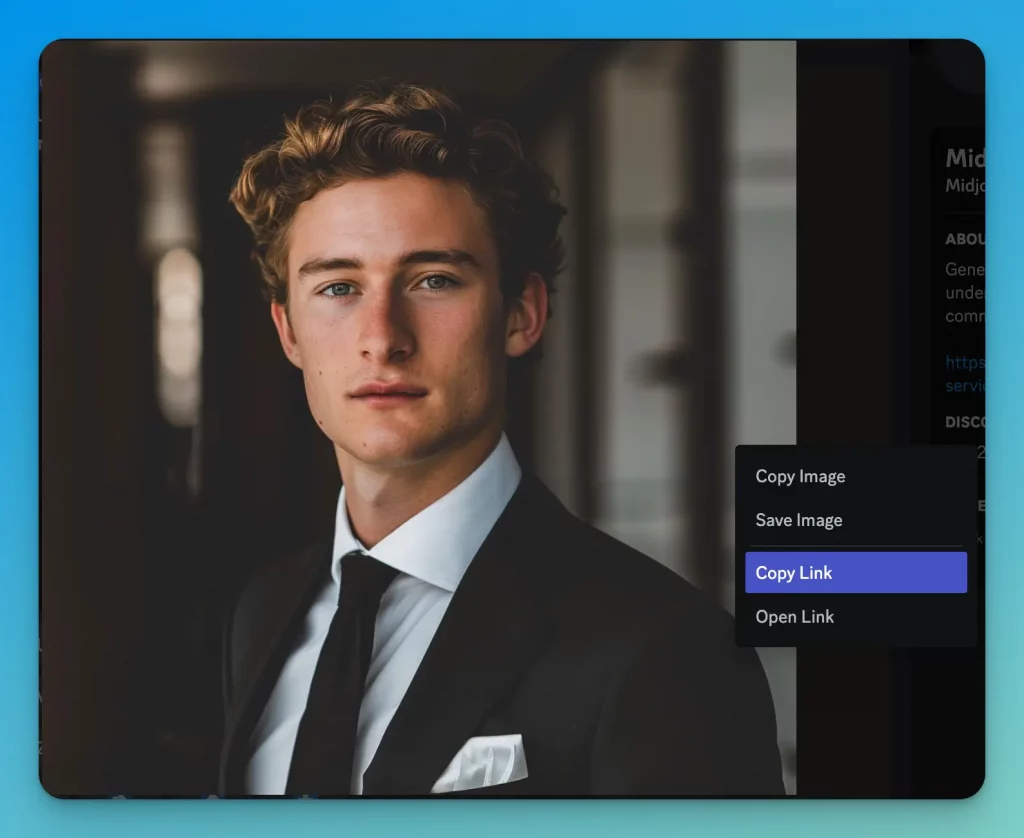
Using the copied URL, I run a new command: “He is in a meeting. –cref [image URL] –v 6.0.” The output image shows the same professional man, now seated at a conference table, engaged in a meeting.

To further test the consistency, I run another command: “He is running to catch a train. –cref [image URL] –v 6.0.” The resulting image depicts the man in a more dynamic pose, dashing beside a train.
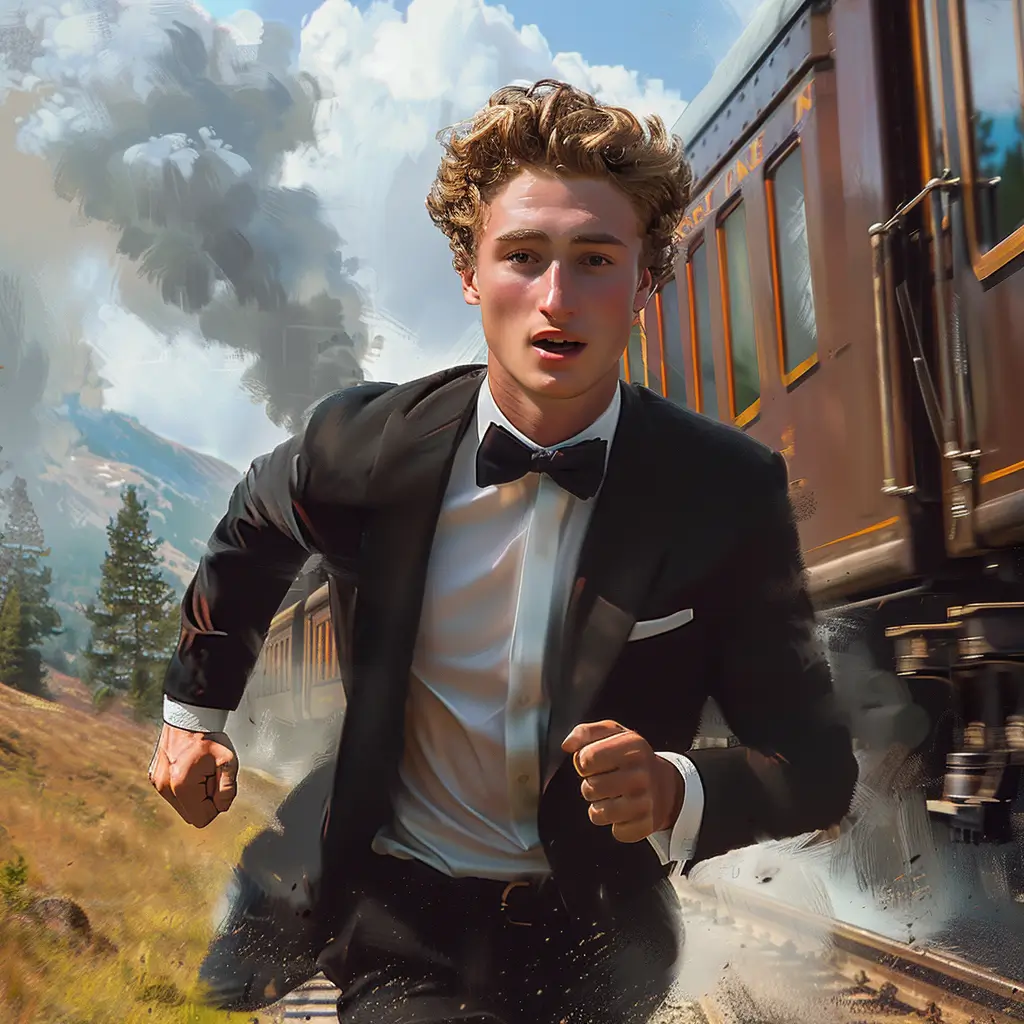
Despite the change in setting and action, the character’s appearance remains consistent, with the same facial features, hairstyle, and professional attire.
3D Character
For my final example, I’ll create a series of images featuring a 3D character. We begin with the prompt, “3d cartoon animation of a college professor.” After selecting the most suitable image from the generated options, we use it as our character reference for the subsequent prompts.
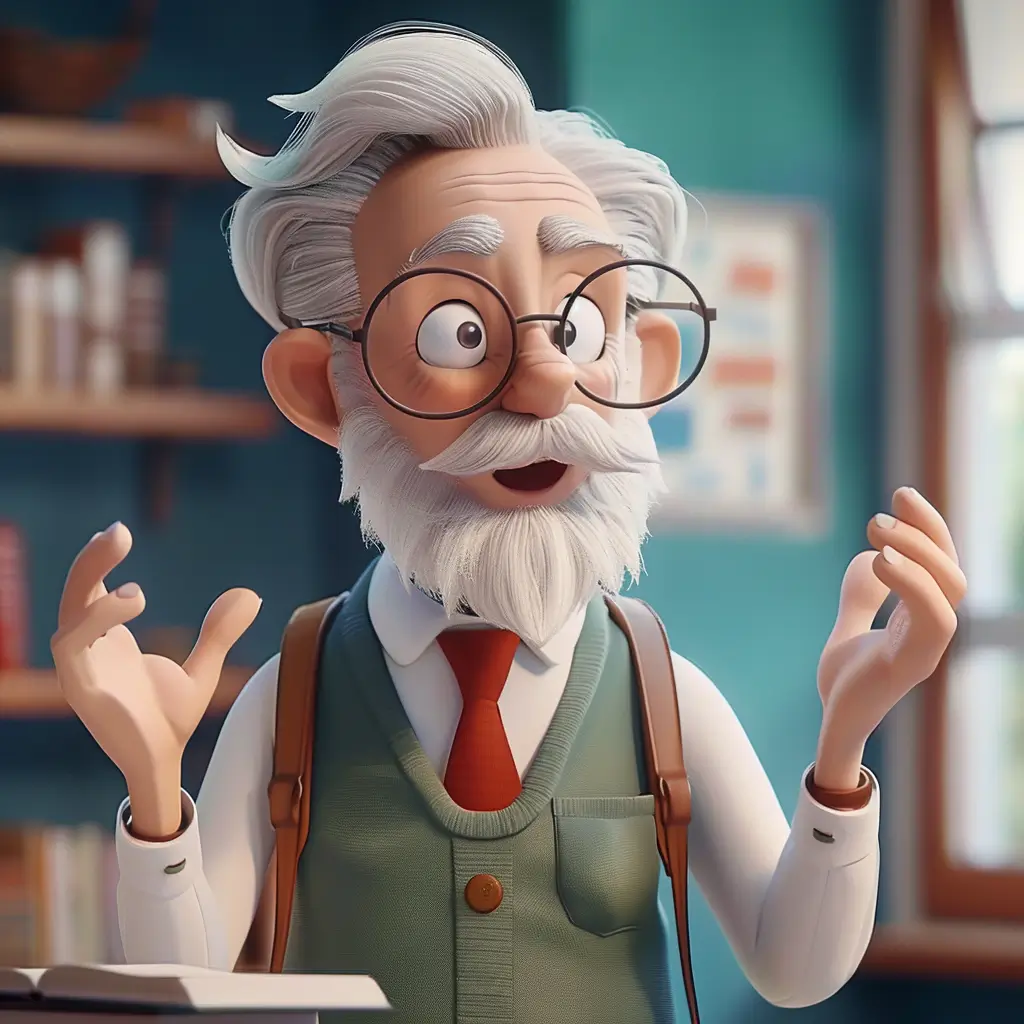
Using the 3D professor image as a reference, I run the prompt, “he is talking with a student.” The resulting image shows the professor engaged in conversation with a student, maintaining the same 3D cartoon style and character design.
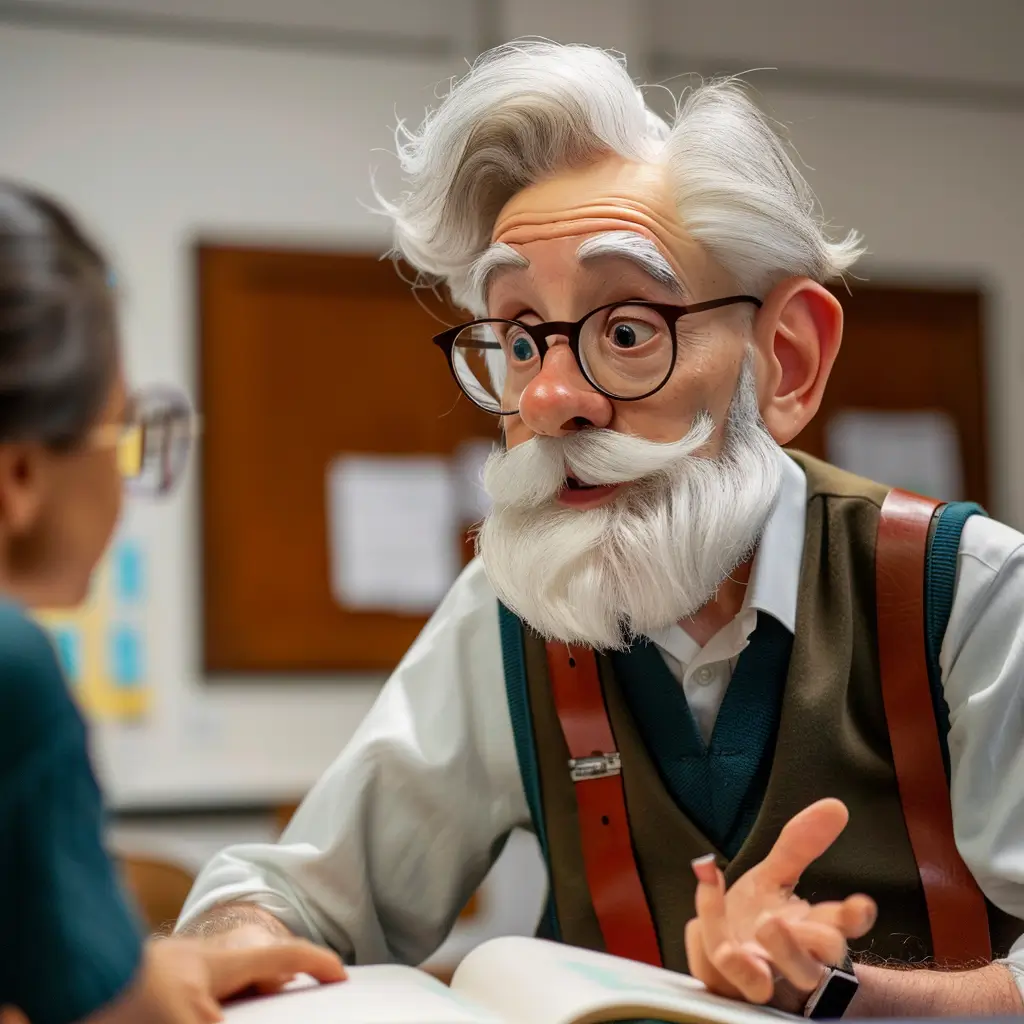
To further showcase the consistency, we use the same reference image with the prompt, “He is cheerful and happy.” The output image depicts the professor with a bright smile and happy expression, while still retaining the core character design.
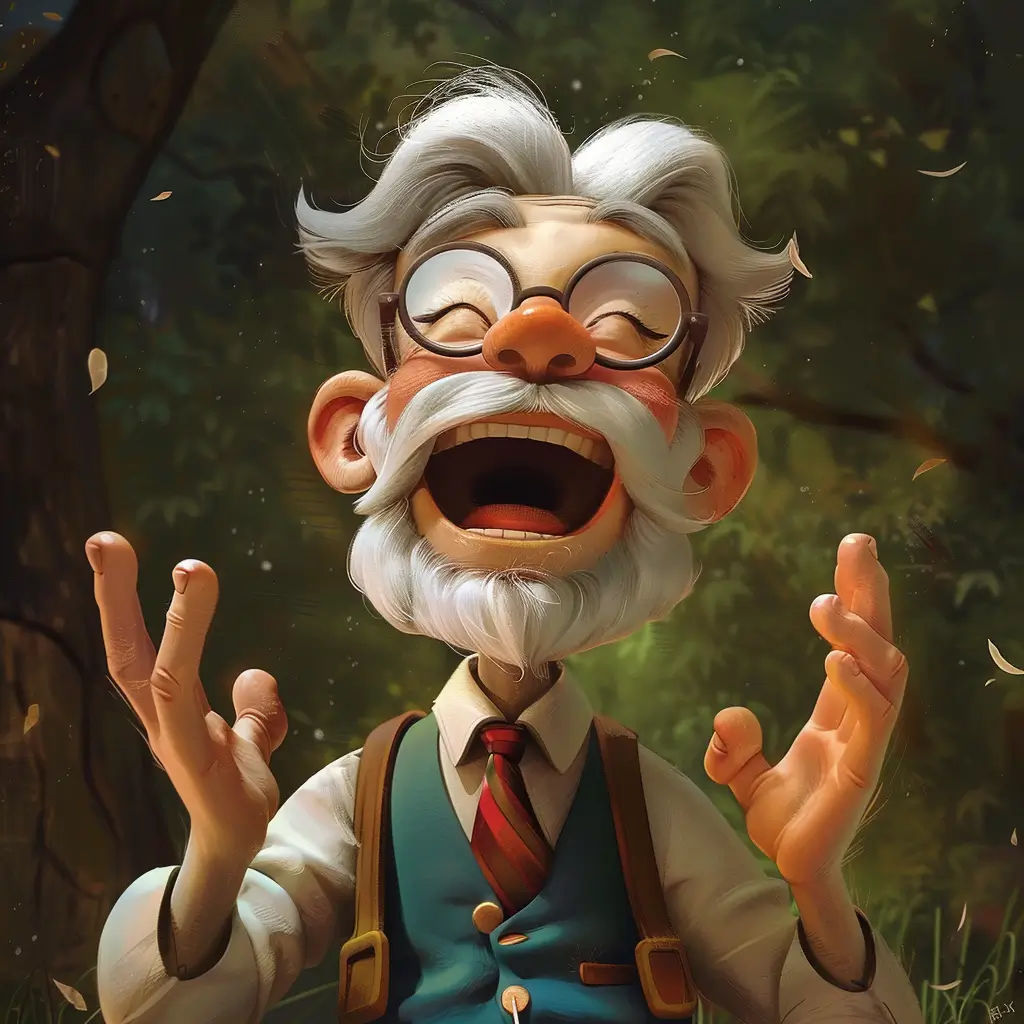
These examples demonstrate the power and versatility of Midjourney’s consistent character feature. Whether you’re working with realistic photos, professional characters, or stylized 3D animations, this tool can help you maintain consistency in your character designs across a wide range of settings and actions.
As you explore this feature further, remember that the consistency may not be perfect, as the algorithm focuses on overall character traits rather than exact details. However, with experimentation and fine-tuning of your prompts and reference strengths, you can achieve impressive results that greatly streamline your character design process.
Scope of Consistent Characters
The introduction of Midjourney’s consistent character feature opens up a world of exciting possibilities for creators across various industries. Let’s explore some of the potential applications and benefits of this powerful tool.
Storytelling and Comics
One of the most obvious applications for consistent characters is in the realm of storytelling and comic creation. Whether you’re working on a graphic novel, a web comic, or a storyboard for a film or animation, maintaining character consistency is crucial for immersion and visual coherence.
With Midjourney’s consistent character feature, artists and writers can easily generate multiple images of the same character in different poses, settings, and emotional states. This not only saves time and effort compared to manually drawing each panel, but also ensures that the character remains recognizable and true to their established design throughout the story.
Moreover, this tool can be particularly helpful for collaborative projects, where multiple artists may be working on the same characters. By using a consistent character reference, teams can maintain a unified vision and avoid discrepancies in character designs across different pages or scenes.
Animation and Game Design
In the world of animation and game design, consistent characters are essential for creating believable and engaging experiences. Whether you’re working on a 2D animated series or a 3D video game, having characters that maintain their unique look and feel across various animations and interactions is crucial.
Midjourney’s consistent character feature can be a valuable asset in the pre-production and concept art stages of these projects. By generating multiple images of a character in different poses and expressions, animators and game designers can get a better sense of how the character will look and move in various situations. This can help inform the creation of 3D models, texture maps, and animation rigs.
Furthermore, the ability to blend multiple character references can be particularly useful for creating variations of a character, such as different outfits or hairstyles, while still maintaining their core design. This can save time and resources in the production process, as artists can quickly generate new variations without having to start from scratch.
Marketing and Advertising
Consistent characters can also play a significant role in marketing and advertising campaigns. From mascots and brand ambassadors to illustrated characters in product packaging and advertisements, having a recognizable and consistent character can help build brand identity and customer loyalty.
With Midjourney’s consistent character feature, marketers and designers can easily generate multiple images of a character in different settings and situations, while still maintaining their core design and personality. This can be particularly useful for creating a series of advertisements or social media posts featuring the same character, helping to reinforce brand recognition and engagement.
Moreover, the ability to quickly generate variations of a character can be valuable for testing different designs and styles in market research and focus groups. By presenting participants with multiple versions of a character, marketers can gather feedback and insights to refine their character designs and ensure they resonate with the target audience.
Educational and Training Materials
Consistent characters can be a valuable asset in the creation of educational and training materials. From textbooks and e-learning modules to instructional videos and interactive simulations, having characters that maintain a consistent appearance and style can help engage learners and reinforce key concepts.
With Midjourney’s consistent character feature, educators and instructional designers can easily generate multiple images of a character in different scenarios and poses, helping to illustrate complex ideas or demonstrate proper procedures.
For example, a series of images showing a consistent character performing different steps in a scientific experiment or a technical process can be more engaging and memorable than text-based instructions alone.
Midjourney’s new algorithm for creating consistent characters is a game-changer for AI art generation. By enabling creators to maintain character consistency across multiple images and settings, this feature unlocks new possibilities for storytelling and creative projects.
As we’ve seen through examples, the consistent character feature works well for a variety of character types and styles, from realistic photos to professional characters and 3D animations. While the results may not be perfect, with some variations in fine details, the overall consistency achieved is impressive and sure to improve as the technology develops further.
The potential applications for this feature are vast, spanning industries such as entertainment, marketing, education, and beyond. From graphic novels and storyboards to virtual reality experiences and educational materials, the ability to generate consistent characters can streamline workflows, enhance user engagement, and open up new avenues for creative expression.
I encourage you to dive in and start experimenting with this feature in your own projects. The consistent character feature is an exciting development that’s worth exploring.
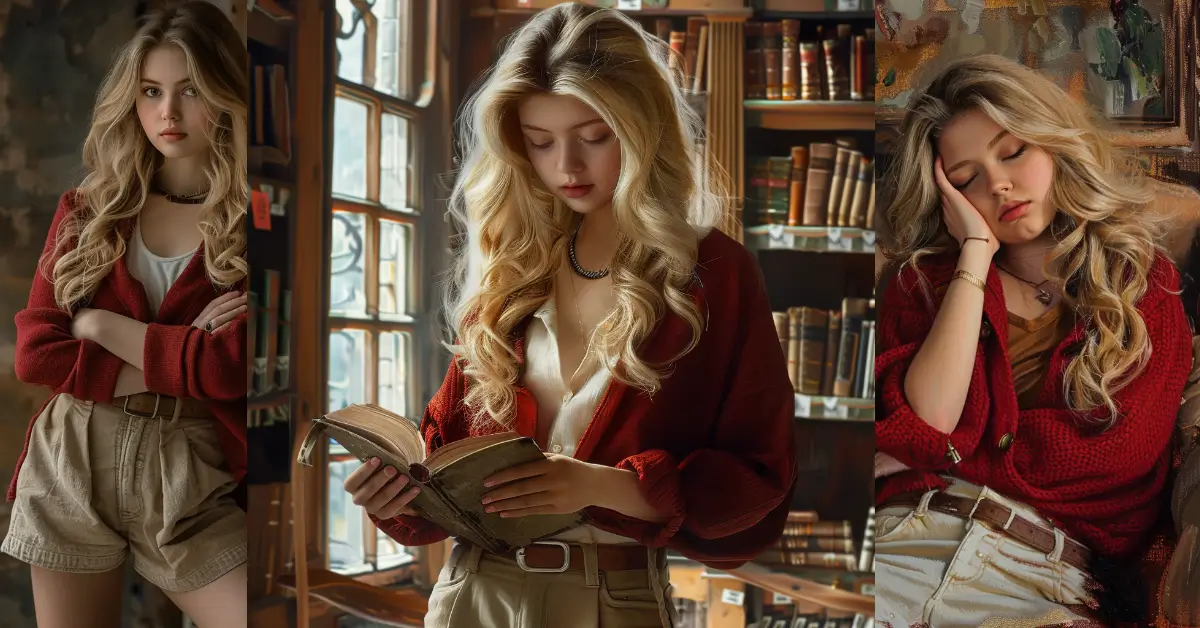

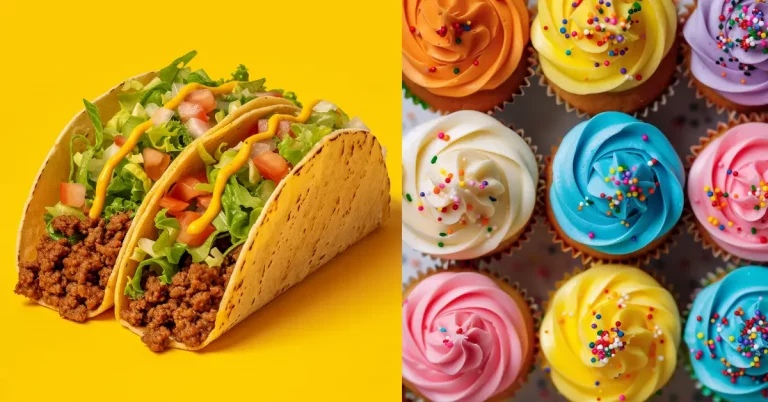

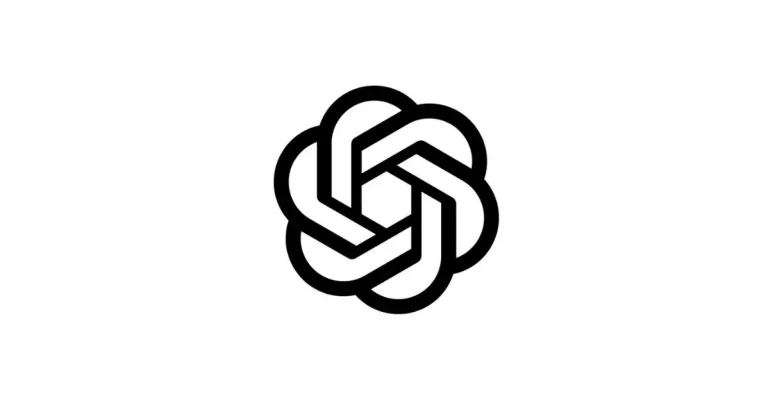
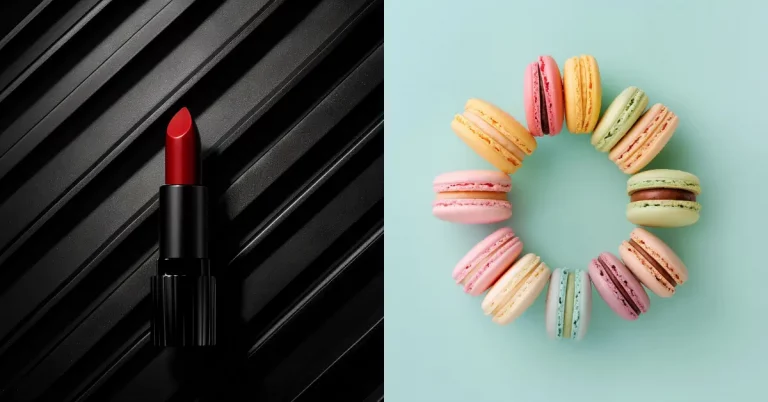

2 Comments